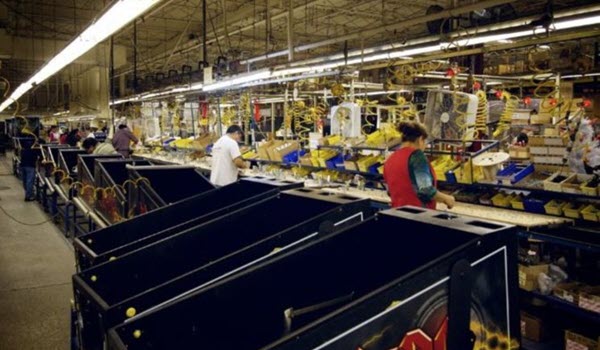The industry of the future or industry 4.0 represents the concepts that have emerged in the industrial world to describe how stakeholders in this field see the industry of tomorrow. Driven by the digitized transformation, the expected changes in the industry affect the factory in all its aspects. The innovations brought by digital technology aim to optimize organization, management and production within the industry while emphasizing the role of people at the heart of strategies.
Let’s see how SME’s can benefit from digital transformation and seize new opportunities!

The challenges faced by SME’s
In order to remain competitive, small and medium-sized companies face new challenges that they must meet. In fact, digital transformation has propelled manufacturers to change their way of thinking. Today, they are driven to invent new procedures, new uses ,find new products and conquer new markets.
Indeed, industrial innovation is now sought after at all hierarchal and functional levels. Here are some examples:
- The digitalization of industrial documents, work instructions and forms
- The adoption of new information technologies for a smooth communication
- The integration of augmented and virtual reality for product design and testing
- The integration of “smart production” to customize products according to the customer’s wishes
What are the new opportunities for the industry of the future?
The digitalization of organizational procedures and production has many benefits. By joining the 4th edition Industrial Revolution, small and medium-sized enterprises are taking advantages of new development opportunities. Some of them are the following:
Opening up to national and international market
The digitalization of the industry also concerns marketing operations that favor the use of the internet. This enables small and medium-sized enterprises to open up to new business opportunities and new national and international markets.
Facilitating knowledge sharing
The digitalization of the management of industrial documentation and training processes has facilitated the transfer of knowledge and mutual support between employees.
Improving intrinsic communication
Using digital communication media helps manufacturers to better share, understand, and apply work instructions and operating procedures. In addition, it has also become possible to measure the use of these documents for improvement.
Involving employees
Operators are in constant communication with the machines and with each other. They more involved in decision-making and report information to decision makers more quickly.
Boosting productivity
A better application of continuous improvement processes boosts employees’ well-being and thus their productivity. Better time management, elimination of waste and contingencies are key factors.
Eliminating defective parts, overproduction or overquality
Careful production planning allows the company to eliminate production of non-compliant parts or produce additional quantities. Knowing the exact needs of customers reduces overquality which is considered as waste.
Better time management
Better time management boosts productivity. It is by reducing the time wasted in tasks that become automated that the company improves its time management.
Planning industrial management interventions
Industrial maintenance teams are more up-to date with planned and preventive maintenance interventions. Digitalization of maintenance management ensures better organization and more efficiency.

What are the appropriate solutions for SME’s?
At Picomto, we propose an offer adapted to small and medium-sized companies to digitalize their operational documentation: work instructions, checklists, trainings… You can consult our offers here or contact one of our experts to learn more.





Leave A Comment